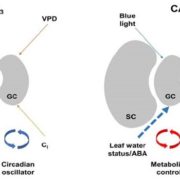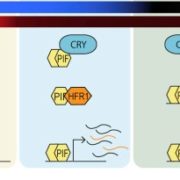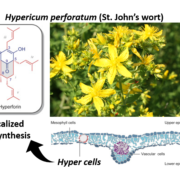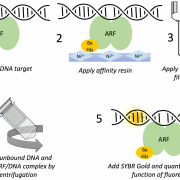Review: The role of auxin in cell wall expansion (OA)
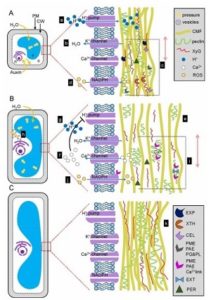 Cell wall is the outermost boundary for a cell. For the protection of cell, it maintains its rigidity. At the same time, for providing the shape of cells, it is capable of becoming flexible. This means that the cell wall has the capacity to maintain both rigidity and flexibility based on the requirement. Auxin is one of the most studied plant hormones involved in plant growth and development. Auxin has two phase of response: early and late response. Immediately after the application of auxin, it induces cell elongation by loosening the cell wall based on the “acid growth hypothesis”. This early response occurs within 10-15 minutes before the starting of traditional signaling events. The early response is mediated through the modification of cell wall. The late auxin response is the TIR1/AFB-mediated degradation of AUX/IAA repressor. Through this pathway, auxin controls the expression of cell wall related genes such as cellulose, expansin, XTH, pectin and peroxidase genes. In this review, the authors tried to cover both sides of auxin signaling for regulating cell wall expansion. (Summary by Arif Ashraf @aribidopsis) Int. J. Mol. Sci. 10.3390/ijms19040951
Cell wall is the outermost boundary for a cell. For the protection of cell, it maintains its rigidity. At the same time, for providing the shape of cells, it is capable of becoming flexible. This means that the cell wall has the capacity to maintain both rigidity and flexibility based on the requirement. Auxin is one of the most studied plant hormones involved in plant growth and development. Auxin has two phase of response: early and late response. Immediately after the application of auxin, it induces cell elongation by loosening the cell wall based on the “acid growth hypothesis”. This early response occurs within 10-15 minutes before the starting of traditional signaling events. The early response is mediated through the modification of cell wall. The late auxin response is the TIR1/AFB-mediated degradation of AUX/IAA repressor. Through this pathway, auxin controls the expression of cell wall related genes such as cellulose, expansin, XTH, pectin and peroxidase genes. In this review, the authors tried to cover both sides of auxin signaling for regulating cell wall expansion. (Summary by Arif Ashraf @aribidopsis) Int. J. Mol. Sci. 10.3390/ijms19040951


